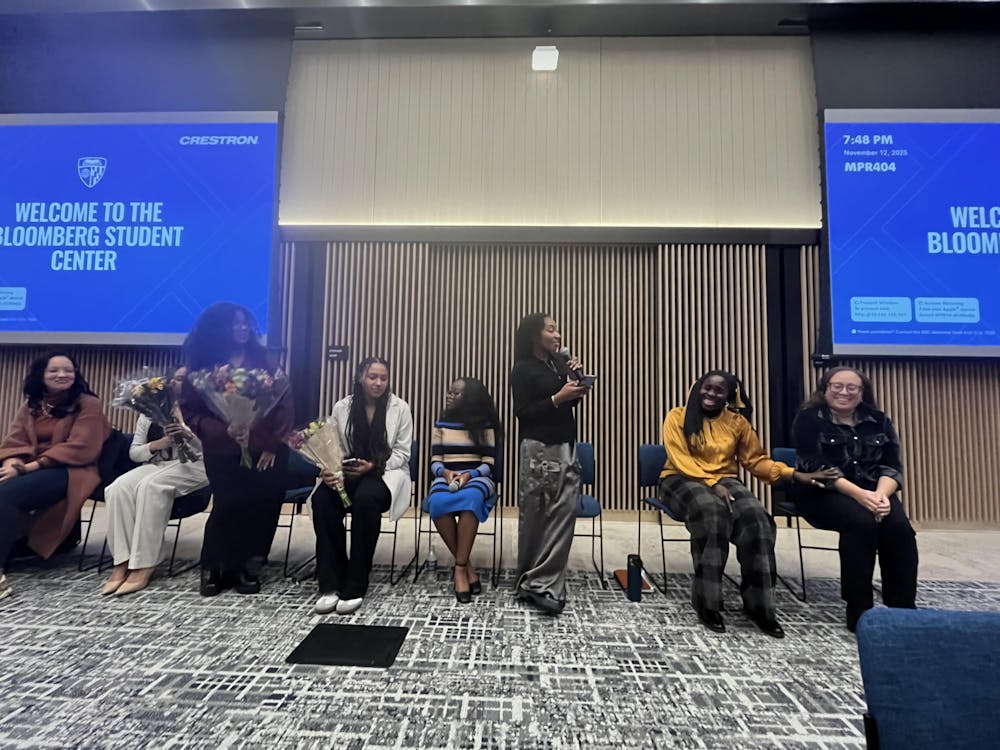By CLAIRE FOX For The News-Letter
Superstitions have a special place in the psyche of Hopkins students. A few campus tales, according to myth, have serious consequences.
Located on the floor in the foyer of Gilman Hall is the official seal of Hopkins. The superstition regarding the seal in the floor Gilman is among the most recognized lore at Hopkins. Junior and campus tour guide Megan Margraff always stops at the seal in Gilman to inform prospective students about the legend since it could potentially make or break their acceptance to the University.
“During tours, we don’t let the prospective families step on the seal and we tell them the myth: If you’re a current student and you step on the seal, you will not graduate from Hopkins. If you’re a prospective student and you step on the seal, you won’t get in. If you're a professor and you step on the seal, you won’t get tenure. And if you’re a prospective parent and you step on the seal, you will not get financial aid,” Margraff wrote in an email to The News-Letter.
The seal in Gilman is treated seriously by members of the Hopkins community. Metal poles and connecting chains have been erected around the seal to prevent people from stepping on it. As a tradition, Hopkins lets down the chains after commencement each year so that graduates can finally step on the seal.
Another common myth revolves around Ira Remsen’s ashes in Remsen Hall. Remsen was the second President of Hopkins and a renowned chemist who helped discover the artificial sweetener saccharin. After his death in 1927, the Board of Trustees named the recently constructed chemistry building in his honor. Soon after, his ashes were interred behind a plaque in what is now Remsen Hall.
Fellow campus tour guide and sophomore Sophie Mirviss explained the lore around the ashes.
“Basically, Remsen’s ashes are in the building — he’s the only person actually buried on the grounds — and it’s said that if you touch the plaque that holds his ashes you’ll get an ‘A’ on your chemistry test,” she said, “and if you take the ashes out, the building will collapse.”
Junior Genevieve Ott, another campus tour guide, knows about a couple of lesser-known superstitions at Hopkins, including the statue at the intersection of Charles and 33rd Street near the Mattin Center. The bronze and marble statue, made in 1935 and given as a gift to the city of Baltimore by the Baltimore Municipal Art Society, features a portrait of Johns Hopkins, a nude female figure holding a bowl with a serpent encircling her arm representing healing and the hospital, a male figure with a book and a scroll representing knowledge and a fountain in front of the monument.
“Students used to rub [the woman’s] breast for good luck on exams, so much so that it got patina (surface rust and discoloration) and the school had to repaint it,” Ott wrote.
Additionally, she mentioned the myth of an apparition who roams Shriver Hall. Shriver was built per the will of Alfred Jenkins Shriver, a Hopkins alumnus from the class of 1939 and a successful lawyer. According to Hopkins Senior Reference Archivist Jim Stimpert, Shriver’s will spelled out several stipulations.
“[Shriver] left nearly $1 million to Hopkins for the construction of a large lecture hall, known today as Shriver Hall. His bequest was contingent upon the university agreeing to certain conditions, chief among these being that several murals should be placed in the hall,” Stimpert said in a Johns Hopkins Magazine article entitled “On Campuses: In Short.” One of the six murals he requested features what Shriver thought to be the 10 most beautiful women of his time.
“The mural that raised eyebrows then, and continues to do so, was entitled ‘Famous Beauties of Baltimore.’ Not only did Shriver specify the 10 women to be included, all acquaintances of his, he stated that each was to be depicted ‘at the height of her beauty,’” Stimpert said.
The ghost of one of the women depicted is rumored to haunt Shriver Hall, according to Ott.
“One of my friends swears she saw one of them behind her in the mirror in the basement girl’s bathroom!” she wrote. Many Hopkins students, including senior Geoffrey Gao, do not put any stock in Hopkins superstitions.
“No, I don’t believe them, but I like the [superstition] about Remsen’s ashes,” Gao said. “They should be more positive like that one.” Senior Yonis Hassan agreed, adding that students already have a lot on their plates and do not need the added paranoia of hypothetically risking their fate.
“I don’t want to have to worry about stepping on something that will make me fail out of all of my classes,” Hassan said.




